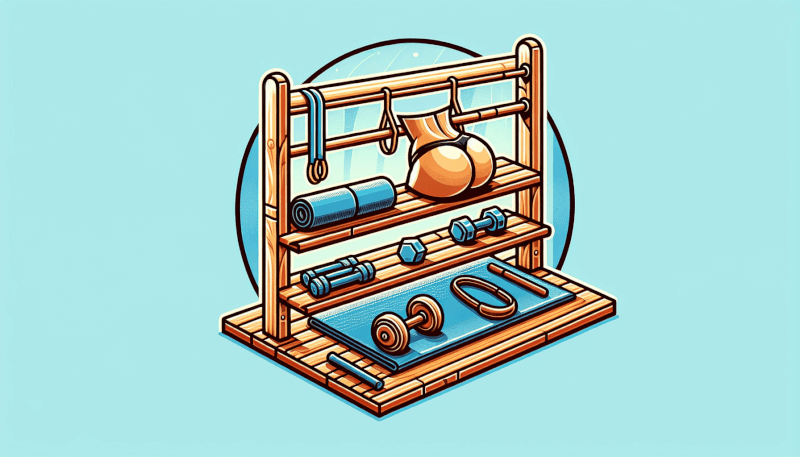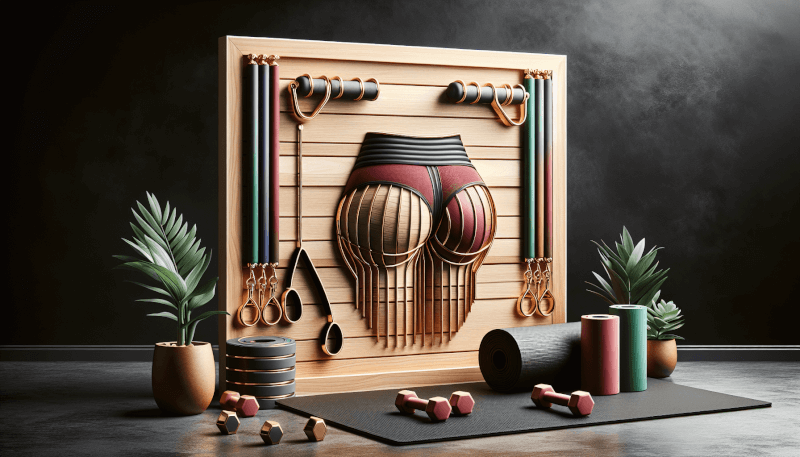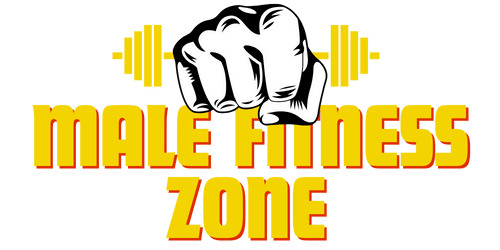Are you tired of spending hours at the gym trying to sculpt your glutes? Look no further! Introducing Glute Shelf Workouts, a revolutionary approach to targeting and toning your glute muscles. This innovative workout technique focuses on utilizing a glute shelf, a specially designed piece of equipment that activates and isolates your glutes like never before. Say goodbye to ineffective exercises and hello to a firmer, perkier backside. Get ready to achieve your desired booty goals with Glute Shelf Workouts.
1. What are Glute Shelf Workouts?
1.1 Definition
Glute shelf workouts are a form of exercise specifically targeting the gluteal muscles, also known as the glutes. These workouts involve the use of a glute shelf, a piece of equipment designed to provide support and resistance during glute-focused exercises. The glute shelf is a padded platform that allows you to perform various movements that engage and strengthen your glutes.
1.2 Purpose
The purpose of glute shelf workouts is to improve the strength, stability, and shape of your glutes. By targeting the gluteal muscles directly, these workouts help to enhance muscle activation, core stability, glute development, and prevent injuries. Whether you are an athlete looking to boost performance, someone wanting to shape and tone their glutes, or simply seeking to improve overall lower body strength, glute shelf workouts can be a valuable addition to your fitness routine.
2. Benefits of Glute Shelf Workouts
2.1 Muscle Activation
One of the key benefits of glute shelf workouts is the increased muscle activation in the glutes. The glute shelf allows for targeted movements that isolate and engage the gluteal muscles, helping to activate them more effectively than traditional exercises. This improved muscle activation can lead to greater strength and development in the glutes, resulting in a toned and shapely appearance.
2.2 Core Stability
Another advantage of glute shelf workouts is the improvement in core stability. When performing exercises on the glute shelf, your core muscles are engaged to maintain balance and control throughout the movements. This not only strengthens your core muscles but also enhances overall stability, which is crucial for maintaining proper posture and preventing back pain.
2.3 Glute Development
Glute shelf workouts are specifically designed to target and develop the gluteal muscles. These workouts involve movements such as squats, lunges, hip thrusts, and glute bridges, all of which activate and strengthen the glutes. By consistently incorporating glute shelf exercises into your routine, you can enhance the shape, size, and strength of your glute muscles.
2.4 Injury Prevention
Strengthening the glutes through glute shelf workouts can also help prevent injuries. The gluteal muscles play a crucial role in stabilizing the pelvis, hips, and lower back during movement. Weak or imbalanced glutes can lead to various issues, including lower back pain, hip instability, and knee injuries. By strengthening and activating the glutes, glute shelf workouts can help improve overall stability and reduce the risk of these injuries.

3. Glute Shelf Exercise Equipment
3.1 Glute Shelf
The glute shelf itself is the main piece of equipment needed for glute shelf workouts. It consists of a sturdy platform with a padded surface designed to provide support and comfort during exercises. The glute shelf is typically adjustable in height and angle, allowing for customization based on individual preferences and exercise variations.
3.2 Resistance Bands
In addition to the glute shelf, resistance bands are often used in glute shelf workouts to add extra resistance to the exercises. These bands are usually made of elastic material and can be wrapped around the thighs or ankles to increase the intensity of the movements. Resistance bands provide a convenient and portable option for adding resistance and variety to your glute shelf workouts.
3.3 Dumbbells
While not strictly necessary, incorporating dumbbells into your glute shelf workouts can offer additional challenges and benefits. Dumbbells can be held during exercises such as lunges or squats to further increase the resistance and intensity of the workout. They provide a versatile option for adding weight to glute-focused movements, allowing for continuous progress and growth.
4. How to Perform Glute Shelf Workouts
4.1 Warm-up
Before starting any glute shelf workout, it is essential to warm-up your muscles to prepare them for exercise. Begin with a few minutes of light cardio, such as jogging or cycling, to increase blood flow and raise your core body temperature. Follow this with dynamic stretches targeting the lower body, such as leg swings or walking lunges, to further loosen up the muscles.
4.2 Common Exercises
There are various exercises that can be performed on the glute shelf to target the glutes effectively. Some common exercises include:
-
Squats: Stand on the glute shelf, feet hip-width apart, and lower into a squat position by bending your knees and pushing your hips back. Keep your chest lifted, and your weight in your heels, then push through your heels to return to the starting position.
-
Lunges: Step onto the glute shelf with one foot and lower your back knee towards the ground, keeping your front knee at a 90-degree angle. Push through your front heel to return to the starting position, then repeat on the other side.
-
Hip Thrusts: Sit on the edge of the glute shelf with your back against the pad. Place your feet flat on the ground, hip-width apart. Drive through your heels to lift your hips off the ground, squeezing your glutes at the top of the movement. Lower your hips back down and repeat.
-
Glute Bridges: Lie on your back with your feet on the glute shelf, knees bent, and hands by your sides. Lift your hips off the ground, squeezing your glutes at the top of the movement, then lower your hips back down and repeat.
4.3 Proper Form and Technique
To maximize the effectiveness of your glute shelf workouts, proper form and technique are crucial. Here are some general tips to keep in mind:
- Maintain a neutral spine throughout the exercises, avoiding excessive rounding or arching of the back.
- Keep your core engaged and avoid overarching your lower back.
- Focus on driving through your heels during lower body movements to activate the glutes.
- Avoid allowing your knees to collapse inward during squats or lunges, keeping them in line with your toes.
- Control the movements, both on the way down and on the way up, to fully engage the glutes.
4.4 Progression and Variations
As with any exercise routine, it’s important to gradually progress and introduce variations to challenge your muscles and prevent plateauing. You can increase the difficulty of glute shelf workouts by adding resistance bands or incorporating dumbbells for added weight. Additionally, variations such as single-leg exercises or plyometric movements can be introduced to further challenge your gluteal muscles.

5. Sample Glute Shelf Workout Routine
5.1 Workout Structure
A sample glute shelf workout routine could consist of the following structure:
- Warm-up: 5 minutes of light cardio followed by dynamic stretches
- Exercise 1: Squats – 3 sets of 12 repetitions
- Exercise 2: Hip Thrusts – 3 sets of 10 repetitions
- Exercise 3: Lunges – 3 sets of 10 repetitions per leg
- Exercise 4: Glute Bridges – 3 sets of 12 repetitions
- Cool-down: Stretching exercises for the lower body muscles
5.2 Exercise Examples
Here are some exercise examples for each movement in the sample glute shelf workout routine:
- Squats: Stand on the glute shelf, feet hip-width apart, and lower into a squat position. You can add resistance bands around your thighs for extra intensity.
- Hip Thrusts: Sit on the edge of the glute shelf, feet flat on the ground, and lift your hips off the ground. To increase difficulty, you can place a dumbbell or barbell across your hips.
- Lunges: Step onto the glute shelf with one foot and lower your back knee towards the ground, then push through your front heel to return to the starting position. Holding dumbbells in each hand can add an extra challenge.
- Glute Bridges: Lie on your back with your feet on the glute shelf, knees bent, and lift your hips off the ground. You can place a resistance band around your thighs to increase resistance.
5.3 Reps, Sets, and Rest
In the sample glute shelf workout routine, performing 3 sets of each exercise is recommended for optimal results. For exercises targeting both legs individually, such as lunges, perform the prescribed repetitions for each leg.
Resting between sets is essential to allow your muscles to recover partially before the next set. Aim for around 60-90 seconds of rest between sets to maintain intensity while allowing for sufficient recovery.
6. Safety Guidelines and Precautions
6.1 Consultation with a Professional
Before starting any new exercise program, it is always recommended to consult with a healthcare professional, particularly if you have any pre-existing medical conditions or concerns. They can provide personalized advice and ensure that glute shelf workouts are suitable for your individual circumstances.
6.2 Starting with Light Weights
If you are new to glute shelf workouts or weightlifting in general, it is important to start with lighter weights and focus on mastering proper form and technique. Gradually increasing the weight or resistance as you become more comfortable and confident will help prevent injuries and allow for consistent progress over time.
6.3 Listening to Your Body
It is essential to listen to your body and pay attention to any signs of discomfort or pain during glute shelf workouts. If you experience sharp or prolonged pain, it is advisable to stop the exercise and assess the cause. Pushing through pain can lead to further injury, so it’s important to rest and seek guidance if needed.
6.4 Proper Recovery and Rest
Allowing your body to recover and rest between glute shelf workouts is crucial for avoiding overtraining and promoting muscle growth. Adequate sleep, nutrition, and hydration are all important factors in the recovery process. Aim for at least one day of rest between intense glute shelf workouts, allowing your muscles to repair and rebuild.
7. Common Mistakes to Avoid
7.1 Using Too Much Weight
One common mistake during glute shelf workouts is using excessive weight or resistance, compromising form and technique. It’s important to prioritize using a weight that allows you to maintain proper form throughout the movements. Focus on gradually increasing the weight rather than jumping to heavy loads too quickly.
7.2 Relying on Momentum
Another mistake is relying on momentum rather than controlled movements. It’s essential to perform each repetition with intention and control, focusing on engaging the glutes rather than using momentum to complete the exercise. Slow and controlled movements will yield better results and reduce the risk of injury.
7.3 Neglecting Core Activation
Forgetting to engage the core during glute shelf workouts can lead to poor form and compromised stability. Make a conscious effort to activate and engage your core muscles throughout the exercises, helping to maintain proper alignment and stability.
7.4 Incorrect Hip Alignment
Misalignment of the hips during glute shelf exercises can diminish the effectiveness of the movements and increase the risk of injury. Pay attention to hip alignment, ensuring that the hips remain level and do not rotate or tilt excessively. This will help target the glutes more effectively and reduce strain on other muscles.
8. Tips and Tricks for Effective Glute Shelf Workouts
8.1 Mind-Muscle Connection
Developing a strong mind-muscle connection is key to maximizing the benefits of glute shelf workouts. Focus on actively engaging your glutes throughout each exercise, consciously squeezing and contracting them at the peak of each movement. This will enhance muscle activation and intensify the workout.
8.2 Focus on Eccentric Movements
The eccentric phase of an exercise, also known as the lowering or lengthening phase, can be particularly effective for activating and strengthening the glutes. Slow down the eccentric portion of each exercise, focusing on maintaining tension in the glutes as you lower into the movement. This controlled eccentric contraction can lead to greater muscle growth and strength.
8.3 Incorporating Supersets
To challenge your glutes and make the most of your workout time, consider incorporating supersets into your glute shelf routine. Pair exercises that target different muscle groups and perform them back-to-back with minimal rest. This not only saves time but also increases the intensity of your workout, maximizing muscle stimulation and burn.
8.4 Engaging the Glutes during Daily Activities
To further enhance the effectiveness of your glute shelf workouts, try to engage your gluteal muscles during daily activities. Practice good posture, squeeze your glutes when walking or climbing stairs, and make a conscious effort to activate them during any lower body movements. This constant engagement will help reinforce the mind-muscle connection and contribute to overall glute development.
9. Frequently Asked Questions (FAQs)
9.1 How often should I do Glute Shelf Workouts?
The frequency of your glute shelf workouts depends on your individual goals, fitness level, and recovery abilities. However, as a general guideline, performing glute shelf workouts 2-3 times a week can be beneficial for most individuals. It’s important to allow at least one day of rest between intense glute workouts to promote proper recovery.
9.2 Can I do Glute Shelf Workouts at home?
Yes, glute shelf workouts can be done at home if you have access to a glute shelf or a similar piece of equipment. Many fitness equipment retailers offer glute shelf options designed for home use. Additionally, resistance bands and dumbbells can easily be incorporated into home workouts to add variety and intensity.
9.3 What if I don’t have a Glute Shelf?
If you don’t have access to a glute shelf, there are alternative exercises that can target the glutes effectively. Exercises such as squats, lunges, and glute bridges can be performed using bodyweight or with props such as a stability ball or bench. While the glute shelf offers unique benefits, it is possible to work on glute strength and development without one.
9.4 Are Glute Shelf Workouts suitable for beginners?
Glute shelf workouts can be suitable for beginners, provided proper form and technique are maintained, and appropriate weights or resistance levels are utilized. Starting with bodyweight movements and gradually adding resistance is a good approach for beginners. Consulting with a fitness professional or personal trainer can also be helpful in designing a safe and effective glute shelf workout routine.
10. Conclusion
Glute shelf workouts are an excellent way to target and strengthen the gluteal muscles, with numerous benefits including increased muscle activation, core stability, glute development, and injury prevention. By incorporating exercises on the glute shelf into your fitness routine, you can enhance the shape, strength, and stability of your glutes. Remember to prioritize proper form, gradually progress your workouts, and listen to your body to ensure a safe and effective glute shelf workout experience. Get ready to boost your glute power and achieve a sculpted, strong lower body!


